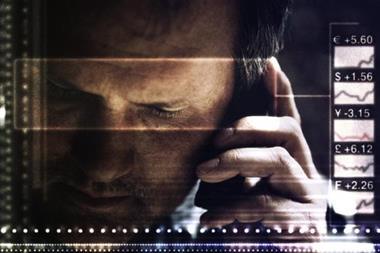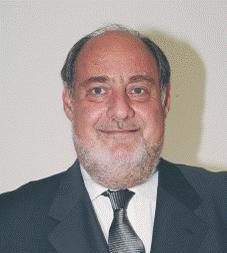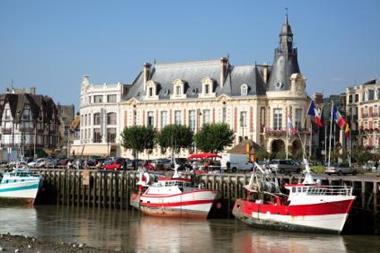Andrew Leslie reflects on last month’s AMRAE conference
It is a well-rehearsed cliché that where the Anglo-Saxon world prefers common sense to intellect, the French prefer philosophy to practicality. Only perhaps at a conference of AMRAE, the French risk managers’ association, would the most important (and most popular) keynote speech be given by a philosopher.
The theme of the 16th ‘Les Rencontres’, held last month at Deauville on the Normandy coast, was ‘Risk – between fear and reason’, and André Comte-Sponville’s transparently clear analysis of the tensions between the two was widely held by delegates to have been one of the high spots of the conference. Jean-Michel Paris, deputy head of enterprise risk management services for southern Europe, Ernst & Young, hailed it as ‘brilliant’. He was not alone.
The conference was opened by incoming president Gérard Lancner, who introduced the theme of fear and reason via a sequence of filmed vox pop interviews, with passers-by being asked what they most feared. All the usual candidates were mentioned, including loss of employment, terrorism, global warming and financial meltdown. Lancner’s thesis was that by using the tools which reason provided, the risk manager could analyse risk, combat fear, and provide his or her organisation with the grounds for rational decision-making.
This vision of the risk manager as a champion in the battle against uncertainty, lifting the shield of reason against the dragon of fear, is a tempting one. If only, that is, the world’s sceptical and resource poor boardrooms could be persuaded to share it. Hence perhaps the renewed prominence given within AMRAE to communication. Communication, on everything within the association’s remit, was held out by Gérard Lancner as one of the three most important supporting pillarsof AMRAE’s newly revitalised structure. The same need to drive home the increasing importance of risk management to those still in need of being convinced, also perhaps lies behind the determined effort by AIRMIC to prove that the concept of enterprise-wide risk management is more than an article of faith, and does actually bring the added value that is claimed for it. At a workshop entitled ‘ERM – Consultant speak or catalyst for value enhancement?’ AIRMIC technical director Paul Hopkin gave his French colleagues a glimpse of some preliminary, and encouraging, findings from the association’s study.
This workshop was one of three dedicated to bringing ‘The British view’ to Deauville which were billed as emphasising the practical above the theoretical, in keeping with the cliché already mentioned. If the opening day of the conference on Wednesday was a day for optimists and rationalists, Thursday was the day when Fear made its comeback. The news that Société Générale, the second biggest bank in France, had suffered a €4.9bn loss through the unauthorised activities of one of its traders, cast a shadow over the morning coffee break, and led delegates to close sympathetic ranks around the lonely figure of Michel Yarhi, outgoing president of AMRAE and SocGen’s risk manager. A less enviable farewell present would be hard to imagine.
Of mice and men
There must have been many attending the day’s workshops who were led to ponder how swiftly the battlements of reason could be undermined by human fallibility, and the risk manager’s armour dented by unforeseen events. This may have been especially true for those attending Thierry van Santen’s exposition of the continuing story of the relationships between internal audit, internal controls and risk management, where, despite the guidance given by such authorities as COSO2, the situation on the ground could still be described as ‘sometimes chaotic’. Lovers of the poet Burns, whose 249th birthday concided with the final day of Les Rencontres, could contemplate the schemes of mice and men and wonder how risk management could stop them from going ‘aft aglay’.
On the Friday, in a new departure for Les Rencontres, a debate was held on ‘Is the sky going to fall on our heads?’ The previous day’s events, combined with turmoil in the markets as the credit crunch continued to bite, gave the subject a certain urgency. Delegates seemed to regard the result of the debate as a draw – the jury is still out.
What were the high points of the conference? For Jean-Michel Paris, ‘the fact that Les Rencontres are just that: a meeting place where you always bump into people.’ In particular he found insights into ERM: ‘While it remains true to say that ERM is a journey, some companies show clear signs of reaching more advanced stages of development. And in doing so, they face new challenges. To truly connect risk assessments to decision-making processes was clearly addressed for the first time.’ For Charlotte Gaudin from Oxéa Conseil, it was the quality of the speakers which impressed. Who was the most interesting person she met? ‘Gérard Lancner, president of AMRAE. I was particularly impressed by the way he made himself available and listened to people...without of course forgetting his talent as a dancer!’
Postscript
Andrew Leslie is deputy editor, StrategicRISK



















No comments yet